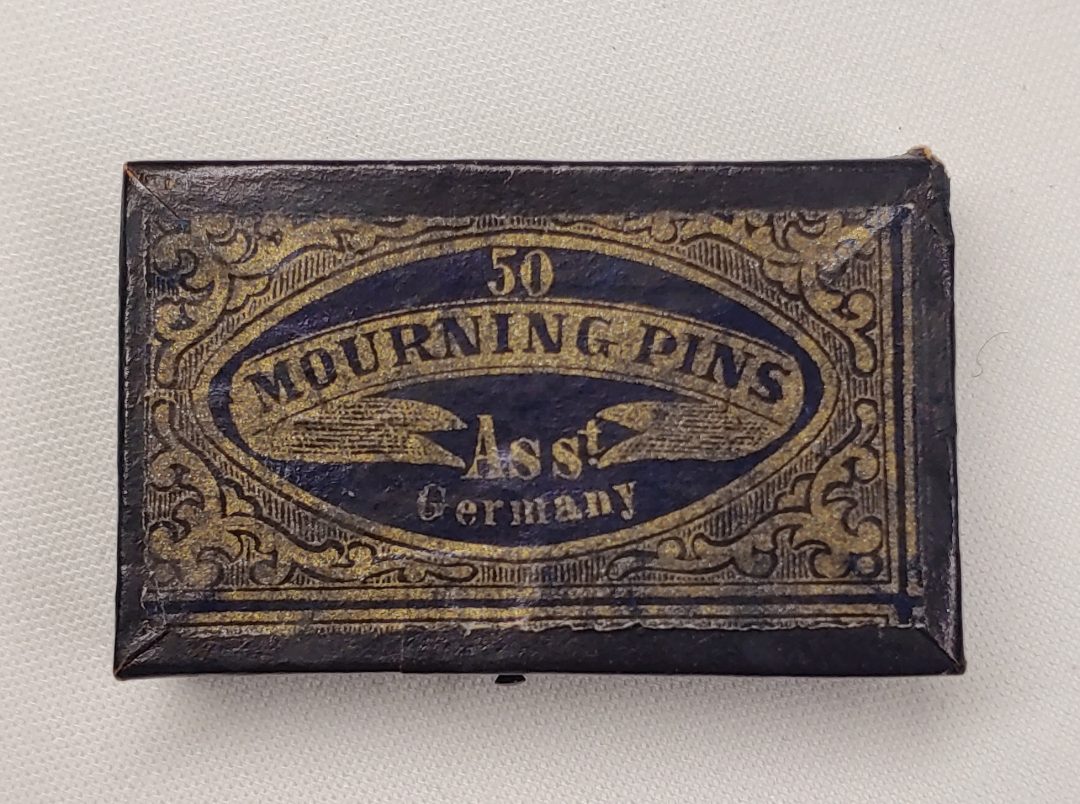
Mourning Pins
Stick with us for the last spooky Tiny Tuesday!
Do not let this unassuming box fool you, its contents played a crucial role in mourning traditions during the 19th and early 20th centuries.
The little black box is made of paperboard, and has a decorative label printed in gold. Its contents are 50 assorted mourning pins, made by an unknown German manufacturer, which are steel finished in black enamel. Unlike regular clothing pins, these were used specifically for securing shawls, veils, and other garments during periods of mourning.
Adhering to mourning traditions required that all clothing, from head to toe, would be governed by strict guidelines. Even accessories were subject to stringent societal rules, and clothing pins were no exception. Regular gold or silver colored pins would stand out against an all-black outfit, so black pins were manufactured to hold garments in place. These were widely available from purveyors specializing in mourning goods, and later, in sections of department stores.
To mourn “fashionably” was an expensive venture. The period of grieving could last well over a year, depending on the relationship to the deceased, and full mourning regalia may not have been cost effective for those outside of the upper classes. However, regardless of status, everyone did their best to show respect for the dead.
It was pertinent to make sure your mourning attire was in tip top shape.
After all, no one wants to insult grandma’s memory with a clashing clothing pin.
